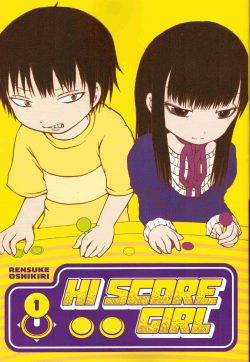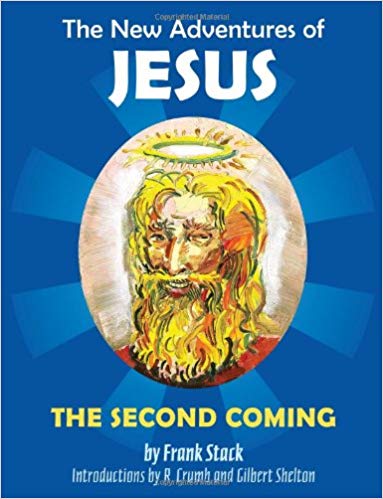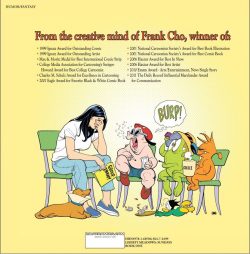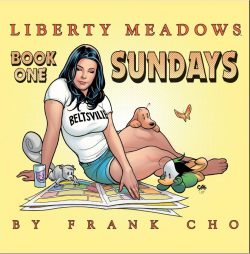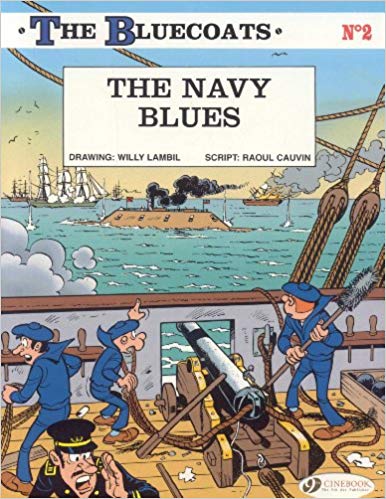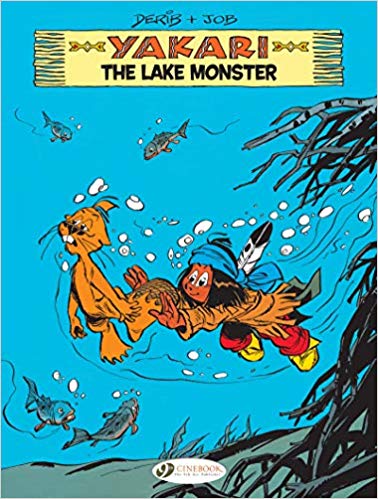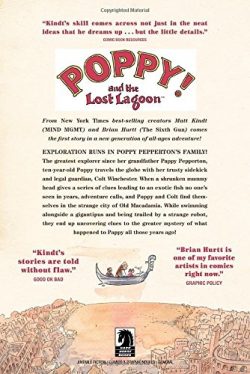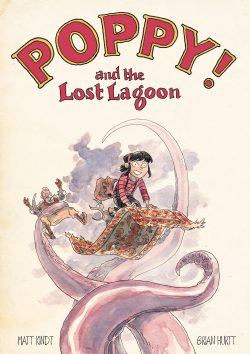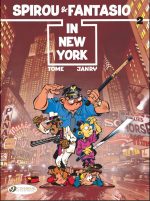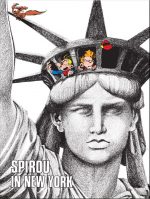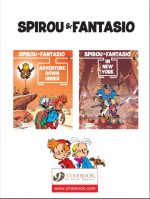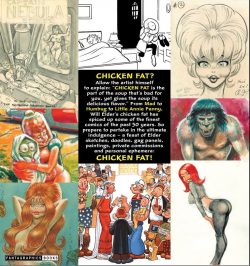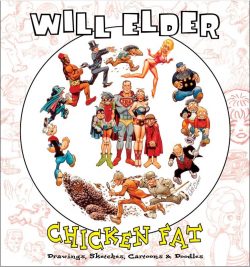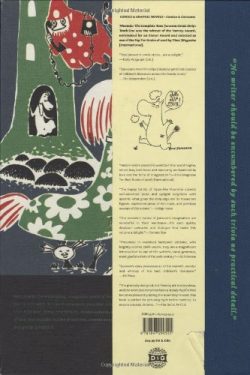
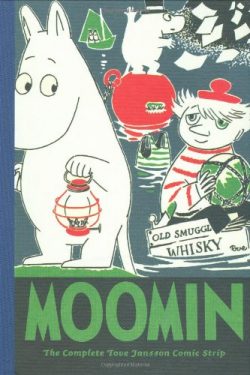
By Tove Jansson (Drawn & Quarterly)
ISBN: 978-1-89729-955-5 (HB)
Tove Jansson was one of the greatest literary innovators and narrative pioneers of the 20th century: equally adept at shaping words and images to create worlds of wonder. She was especially expressive with basic components such as pen and ink, manipulating slim economical lines and patterns to realise sublime realms of fascination, whilst her dexterity made simple forms into incredibly expressive and potent symbols.
Tove Marika Jansson was born into an artistic, intellectual and surprisingly bohemian Swedish family in Helsinki, Finland on August 9th 1914. Her father Viktor was a sculptor, her mother Signe Hammarsten-Jansson a successful illustrator, graphic designer and commercial artist. Tove’s brothers Lars and Per Olov became a cartoonist/writer and photographer respectively. The family and its close intellectual, eccentric circle of friends seems to have been cast rather than born, with a witty play or challenging sitcom as the piece they were all destined to act in.
After intensive study from 1930-1938 (University College of Arts, Crafts and Design, Stockholm, the Graphic School of The Finnish Academy of Fine Arts and L’Ecole d’Adrien Holy and L’Ecole des Beaux-Arts, Paris) she became a successful exhibiting artist through the troubled period of the Second World War. Intensely creative in many fields, she published the first fantastic Moomins adventure in 1945: SmÃ¥trollen och den stora översvämningen (The Little Trolls and the Great Flood or latterly and more euphoniously The Moomins and the Great Flood), a whimsical epic of gentle, inclusive, accepting, understanding, bohemian, misfit trolls and their strange friends…
A youthful over-achiever, from 1930-1953 Tove worked as an illustrator and cartoonist for the Swedish satirical magazine Garm, and achieved some measure of notoriety with an infamous political sketch of Hitler in nappies that lampooned the Appeasement policies of Chamberlain and other European leaders in the build-up to World War II. She was also an in-demand illustrator for many magazines and children’s books, and had started selling comic strips as early as 1929.
Moomintroll was her signature character. Quite Literally.
The lumpy, gently adventurous, wide-eyed romantic goof began life as a spindly sigil next to her name in Jansson’s political works. She called him “Snork†and claimed she had designed him in a childish fit of pique – the ugliest thing a precocious little girl could imagine – as a response to losing an argument about Immanuel Kant with her brother.
The term “Moomin†came from her maternal uncle Einar Hammarsten who attempted to stop her pilfering food when she visited by warning her that a Moomintroll guarded the kitchen, creeping up on trespassers and breathing cold air down their necks. Snork/Moomin filled out, became timidly nicer – if a little clingy and insecure – acting as a placid therapy-tool to counteract the grimness of the post-war world.
The Moomins and the Great Flood didn’t make much of an initial impact but she persisted, probably as much for her own edification as any other reason, and in 1946 the second book Kometjakten (Comet in Moominland) was published. Many commentators have reckoned the terrifying tale a skilfully compelling allegory of Nuclear Armageddon.
When it and her third illustrated novel Trollkarlens hatt (1948, Finn Family Moomintroll or occasionally The Happy Moomins) were translated into English in 1952 to great acclaim, it prompted British publishing giant Associated Press to commission a newspaper strip about her seductively sweet and sensibly surreal creations.
Jansson had no misgivings or prejudices about strip cartoons and had already adapted Comet in Moominland for Swedish/Finnish paper Ny Tid. Mumintrollet och jordens undergäng – Moomintrolls and the End of the World – was a popular feature so Jansson readily accepted the chance to extend her eclectic family across the world.
After brief negotiations with AP boss Charles Sutton, in 1953 The London Evening News began the first of 21 Moomin strip sagas which rapidly captivated readers of all ages. Jansson’s involvement in the cartoon feature ended in 1959, a casualty of its own success and a punishing publication schedule. So great was the strain that towards the end she had recruited brother Lars to help. He took over, continuing the feature until its end in 1975. The five strips in this volume are all Tove and span July 18th 1956 to 30th April 1957.
Free of the strip, Tove returned to painting, writing and her other creative pursuits, generating plays, murals, public art, stage designs, costumes for dramas and ballets, a Moomin opera and another nine Moomin-related picture-books and novels, as well as thirteen books and short-story collections strictly for grown-ups.
Tove Jansson died on June 27th 2001 and her awards are too numerous to mention, but consider this: how many modern artists – let alone comics creators – get their faces on the national currency?
The Moomin comic strips have long been available in Scandinavian volumes but it took the discerning folk at Drawn & Quarterly to sagely and belatedly translated them all into English for your – and especially my – sheer delight and delectation, so a hearty “thanks†to them!
Moomintrolls are easy-going free spirits, bohemians untroubled by hidebound domestic mores and societal pressures. Moominmama is warm and capable but overly concerned with propriety and appearances whilst Moominpappa spends most of his time trying to rekindle his adventurous youth or dreaming of fantastic journeys. Their unimaginatively named son Moomin is a meek and dreamy boy utterly besotted with their permanent house guest Snorkmaiden… although that particularly impressionable gamin prefers to play things slowly whilst waiting for somebody potentially better…
As already stated, this third oversized (312 x 222mm) monochrome hardback compilation gathers strip sagas from 1956 and 1957, with Tove in fine satirical form and eerily ecologically prescient as ‘Moomin Falls in Love’ sees scarily unseasonal rainfall result in devasting floods that inundate the sedate valley.
With everything under water, a wave of refugees soon wash up: not only displaced and drenched neighbours but also wildly exotic strangers such as the circus horse, multitalented performer Emeraldo and glamourous leading lady La Goona.
Soon, this lascivious latter has naïve Moomin agonisingly under her uncaring thumb and Snorkmaiden is fuming, but romantic advice from quirky, overly romantic and lonely Mymble and spiteful Little My isn’t helping at all…
Just as the crisis is calmed, the weather again goes wild as a super heatwave blisters the land. When a large crate of tropical seeds washes ashore it isn’t long before ‘Moominvalley Turns Jungle’: a situation made even worse when sneaky rogue Stinky frees all the animals from the local zoo. With beasts and bewildered boffins roaming the verdant countryside and young Moomintroll channelling his inner Tarzan, chaos abounds and goes into overdrive when the zookeepers invade in force determined to recapture all their animals. Sadly, these seasoned professionals are utterly unable to tell the difference between Moomins and Hippos…
And then the weather turns again…
Succumbing to the tone of the times, an abundance of flying Saucer sightings leads to ‘Moomin and the Martians’ as a crashed UFO allows dangerously miraculous machinery to fall into untrustworthy paws. Its bad enough that Moomintroll and Moominpappa’s meddling provokes a plague of invisibility and antigravity, but when Moominmamma takes charge decent sensible folk start indulging in odd transformations…
Meanwhile the anxious authorities send their top Inspector to solve the situation, but instead of locating the missing invader from the Red Planet he becomes a menace too. And then more Martians arrive…
Presaging and informing her 1965 novel Moominpappa at Sea, ‘Moomin and the Sea’ finds Jansson’s eclectic family reluctantly relocated to a desolate rock to man a lighthouse whilst allowing the man of the house the time and experiences needed to write the Great Finnish Maritime Novel.
Of course, the foolish pipedream soon goes terribly awry. The island is desolate, forbidding, so utterly lacking in the vegetation that Moominmamma needs to thrive that the new inhabitants become anxious, fractious and even hostile. Somehow, the barren rock still has room for a ghost – albeit a peculiarly ineffective one that only scares young Moomintroll…
The only relief from the abject misery is a strangely dedicated old fisherman and a canny, capable beachcomber called Too-Tikki (the eminently practical sailor woman was based on Jansson’s life partner, graphic artist Tuulikki Pietilä, and first appeared in print in the 1957 novel Moominland Midwinter) but even they can’t help much when a big storm breaks without warning…
Once back in their beloved homeland, the family is then aggrieved by cultural catastrophe and legal tribulation in the final yarn of this collection as ‘Club Life in Moominvalley’ sees Pappa and Mamma beguiled by a mad upswell of lodges, societies and exclusive social networks amongst the adults.
These make a spoiled, arrogant and juvenile chauvinist of him and a nervous, browbeaten and unwilling criminal accomplice of her, as mean old Stinky starts his own Gangsters and Robbers Club and blackmails Moominmamma into using the cellar as their loot cache…
Thankfully Moomintroll and the Snorkmaiden are still young enough not to bow to such intolerable peer pressure and The Inspector is on the case…
This amazing, enchanting collection concludes with short essay ‘Tove Jansson: To Live in Peace, Plant Potatoes, and Dream’: a comprehensive biography and commentary by Alisia Grace Chase (PhD) which celebrates the incredible achievements of this genteel giant of literature.
These are truly enchanting magical tales for the young laced with the devastating observation and razor-sharp mature wit which enhances and elevates only the greatest kid’s stories into classics of literature. These volumes are an international treasure and no fan of the medium – or indeed carbon-based lifeform with even a hint of heart and soul – can afford to be without them.
© 2008, 2015 Solo/Bulls. All other material © its creators. All rights reserved.




